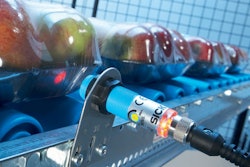On the heels of a debate between The Aluminum Association and the PET Resin Association (PETRA) over whether aluminum or PET is the greener solution for single-serve beverages, The Aluminum Association has announced that it has completed “one of the most comprehensive and transparent life-cycle analyses (LCA) ever conducted by an industry group.”
The independent study of aluminum cans, carried out by PE Americas, part of strategic consultancy PE International, was undertaken in part to respond to Walmart’s packaging scorecard, which calls for its suppliers in all sectors to reduce their carbon footprint.
The results, which the association says confirm major reductions in the aluminum can’s carbon footprint and energy use over the last 17 years, have been provided to both the Environmental Protection Agency (EPA) and Walmart. Major findings include:
• Reduction in overall carbon footprint of the aluminum can by 44%
• 30% less energy usage
• Reduction in package weight of 15%
• 68% total recycled content, the highest of any beverage package material
“The data shows that we are using significantly less material and less energy to produce same-size beverage cans as compared with 17 years ago,” says Steve Larkin, president of The Aluminum Association. “The aluminum industry has made tremendous gains in sustainability. The aluminum can is more sustainable than ever.”
The comprehensive life-cycle study analyzes the entire production process—from bauxite mining to can manufacturing. The study incorporates the latest available information on energy and material consumption, greenhouse gas emissions, and other environmental releases. The study examines the can manufacturing process using both the cradle-to-cradle closed-loop approach and the recycled-content approach. It conformed to ISO methodology and was peer-reviewed by experts from the Society of Environmental Toxicology and Chemistry and the EPA.
“LCA is the universally accepted method to comprehensively assess the environmental impact of a product from the raw materials, through the production, distribution, use, disposal, and recycling of that product—its full life cycle,” says Nuno da Silva, managing director of PE Americas.
Says Larkin, “The aluminum industry has made every effort to ensure the integrity and transparency of this important project.” In addition to being posted on the association’s website, the results and supporting data have been provided to the EPA, where they will be used to update the existing Life-Cycle Inventory database and the agency’s Waste Reduction Model.
“The study also confirmed our belief that the key to continuing to improve the carbon footprint of the aluminum can is to increase recycling rates,” says Pat Persico, manager of corporate communications for Novelis and chair of The Aluminum Association’s Can Committee. She notes that the aluminum industry is committed to a goal to increase the recycling rate to 75% by 2015, up from it’s current rate of 54. %. “Recycled aluminum uses 95-percent less energy and creates 95-percent less greenhouse gas emissions than new aluminum,” Persico says.
Notes the association, when recycled, the aluminum from an aluminum container can be back on the shelf in as little as 60 days, and 34 cans can be made from just one pound of aluminum.


























